Nature Reserve
Caerlaverock Wetland Centre is a spectacular 1,400 acre wild reserve situated on the north Solway coast. From dawn until dusk, from January to December, in fair weather and not so fair, its open coastal landscape and wide skies are full of the sights and sounds of nature – and very little else.
The centre is deservedly famous for its vast flocks of over-wintering water birds, including around 30,000 barnacle geese from Arctic Svalbard and large numbers of pink-footed geese and whooper swans. Summer offers the opportunity to explore rolling wildflower meadows, watch ospreys hunting over the Solway and even spot barn owls and badgers.
Viewing Wildlife
Farmhouse Tower
From the top of this three-storey tower, take in the best panoramic view over the whole 1400 acres of the WWT Caerlaverock holding, equivalent to 900 football pitches! The largest binoculars in Scotland allow you to see what is going on all over the reserve. Look down on the Folly Pond where hundreds of whooper swans roost overnight in winter. In summer, watch house martins dart into their nests clinging onto the tower eaves.
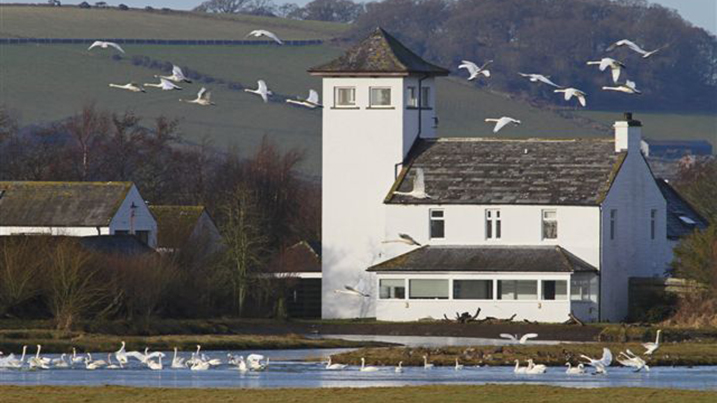
Folly Pond Hide
This large log hide with a turf roof gives a great low level, close up view of the Folly Pond. It is often the hot spot for rare waders and ducks on the reserve.
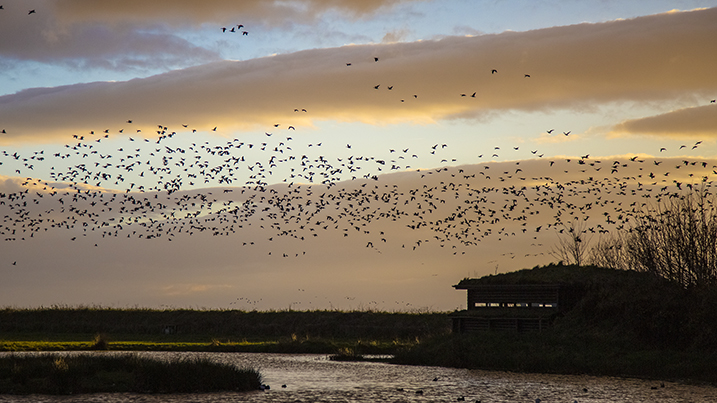
Sir Peter Scott Trail
This short walk meanders round the wet woodland and has two hides and a screened viewing area. The Newfield Hide looks north over the wet fields and the Back Pond Hide faces east along the pond with the chance of seeing a kingfisher perching and fishing. There is also a large viewing screen looking over the wild bird feeding station getting you close to the small birds that flock to the feeders, including tree sparrows. In winter, water rail are often seen under the feeders too.
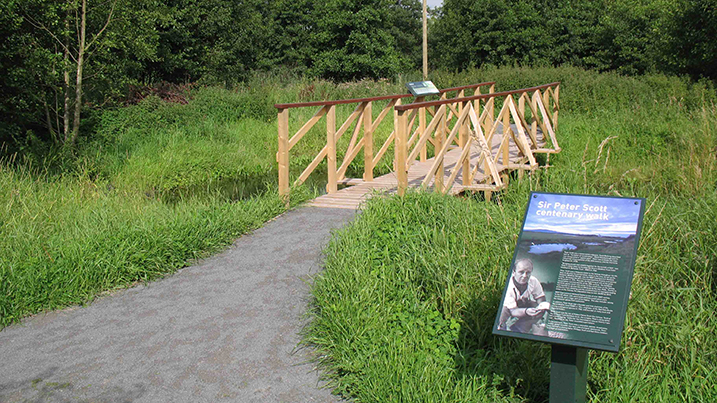
Scottish Water Hide
This hide gives a different aspect over the Folly Pond, with shovelers, teal and wigeon directly in front.
Wildlife Garden
In our garden, you can watch butterflies and bumblebess busy themselves amongst the flowers. This space has been created to demonstrate some of the many things you can do in your outdoor space to help wildlife.
Sir Peter Scott Observatory
This heated observatory has large picture windows and looks out over the Whooper Pond. It is approximately 150 metres from the Visitor Centre.
In winter, it is the scene of the wild swan feeds where up to 200 whooper swans fly in to feed right in front of the windows. The swans are fed grain along the front of the building daily from October to March. It is a fantastic opportunity to learn about the amazing journeys these swans have undertaken to and from Iceland.
Seeing a swan feed is a must when visiting Caerlaverock. It is unique in Scotland and you can get closer to wild whooper swans than anywhere else in the country. Mute swans, wigeon, mallards, tufted ducks, shoveler, teal, greylag geese and the occasional scaup or Bewick's swan may also be seen. There is a tower attached to this observatory which gives great views over the Whooper Pond, meadow and Corner Field. The tower is accessible by a lift or stairs.
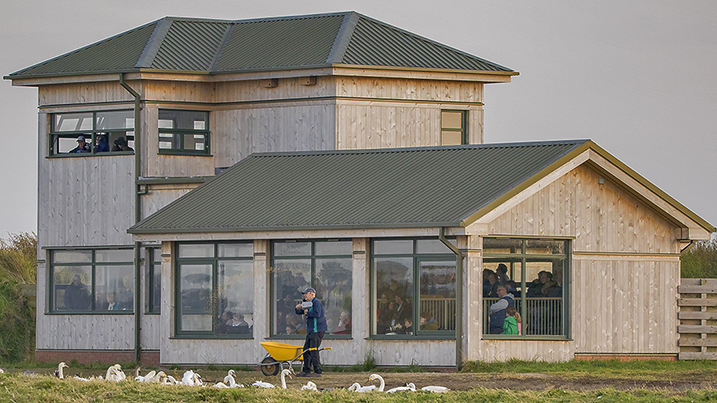
Saltcot Merse Observatory
The Saltcot Merse Observatory provides excellent views over the reserve and south over the vast saltmarshes to the Solway and the Lake District fells beyond. This is an ideal spot to watch thousands of waders pushed in at high tide, as well as peregrine falcons, hen harriers and marsh harriers hunting over the merse. It is approximately half a mile from the Visitor Centre
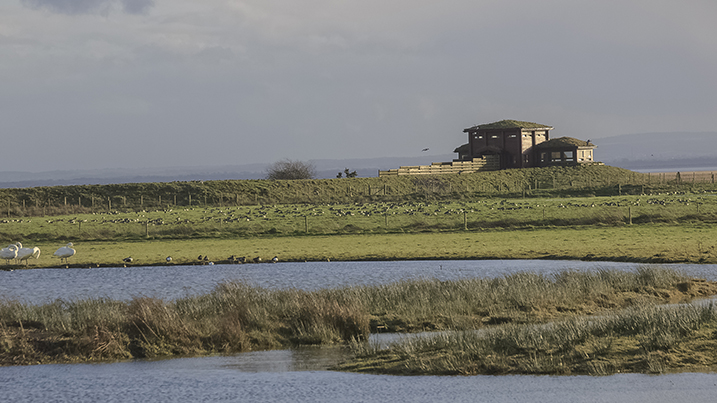
Glengoyne Hide
Another log hide looks east over the Corner Field. It is a favourite for barnacle geese, especially in the mornings and in summer it can be covered in lapwings and golden plovers."
Sharp's Lookout
This viewpoint looks towards the back of the Folly Pond, where curlews and barnacle geese like to feed in winter. It gives a nice view towards Criffel.
Avenue Tower
Another three-storey tower at the end of the Avenue looks over the eastern end of the reserve. The floodground can be full of ducks and waders and it overlooks some of the best barnacle goose grazing fields on the Solway, right below the tower. It is approximately half a mile from the Visitor Centre.
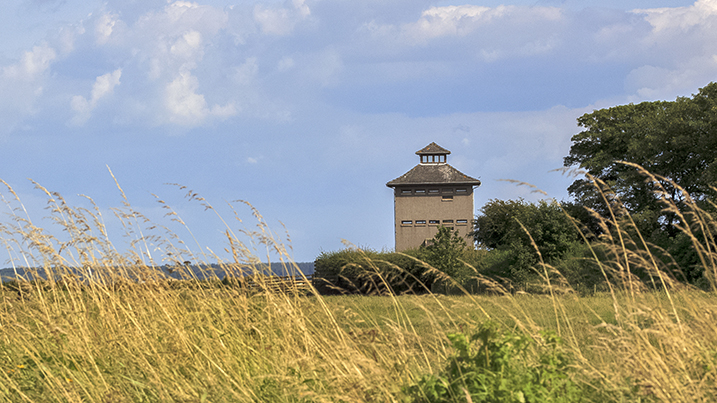
Campbell Hide
There is a third log hide which looks north over the floodground. With the sun behind you, it can be the best place to look for waders and ducks.
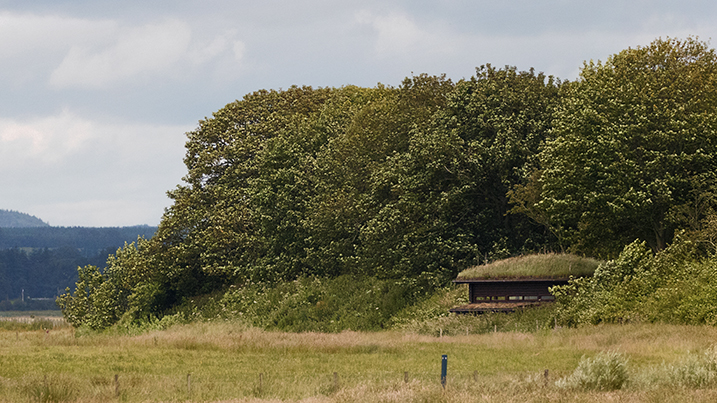
Teal Pond Hide
This is a small hide that looks over the Teal Pond. In spring, watch as the mute swans sit on their nest waiting for their cygents to arrive. Little egrets are sometimes hunting from here too. IN winter, watch teal and wigeon bob around each other or a roe deer trot past.
Screens
We have 13 small hides set into the screen banks of the Avenue and Saltcot Loaning looking out over the borrow pit pools and fields. These intimate one, two or four person screens allow you to get away from it all and enjoy a bit of wildlife watching in solitude.
Walk on the Wild Side
Sweep through flower-filled meadows, past wild orchids and orange-tipped butterflies on our magical wildflower meadow walk (open May-August). Follow the muddy banks of the Lochar Water, looking out for roe deer tracks or a glimpse of the elusive otters who live here.
- In this section